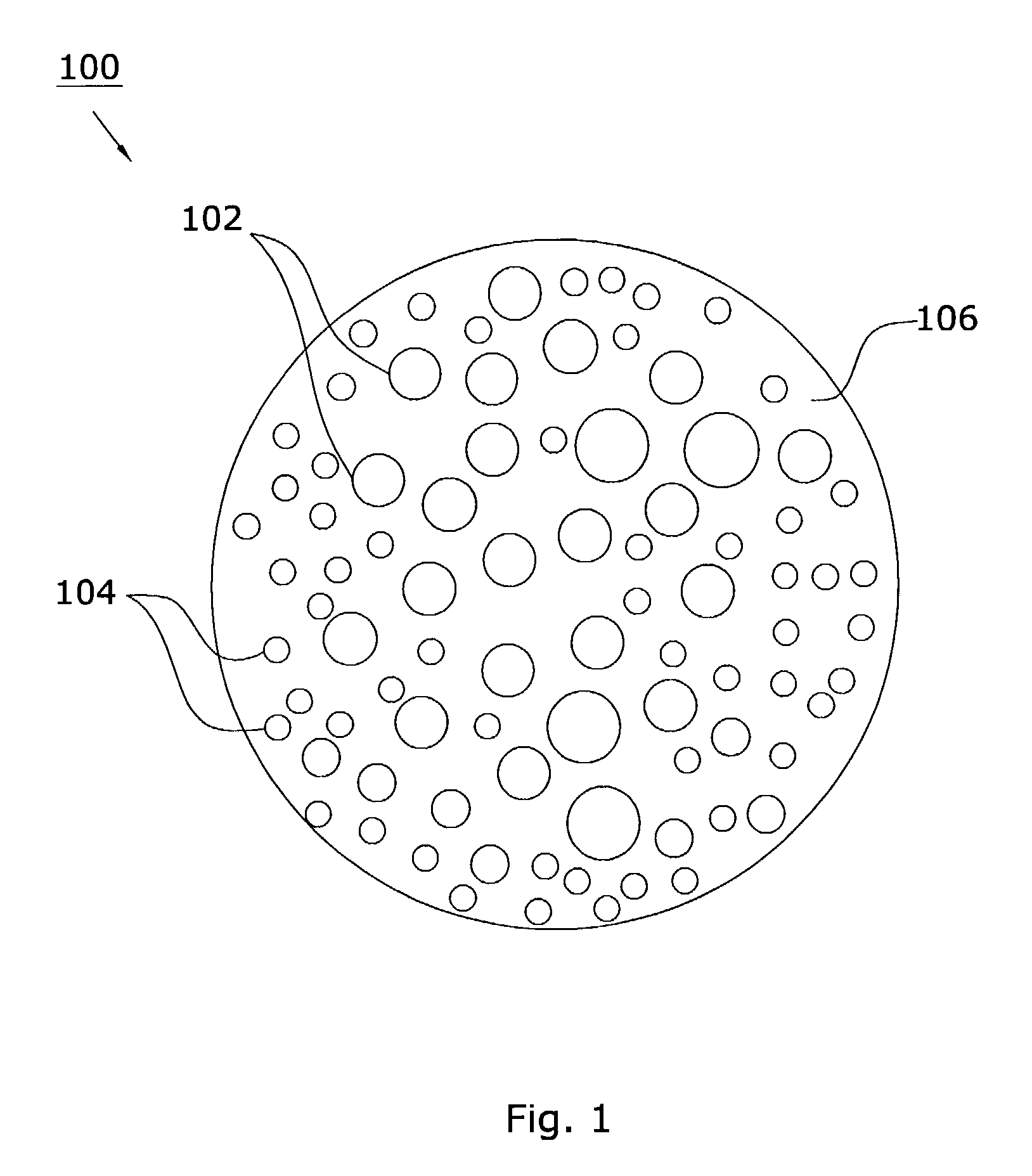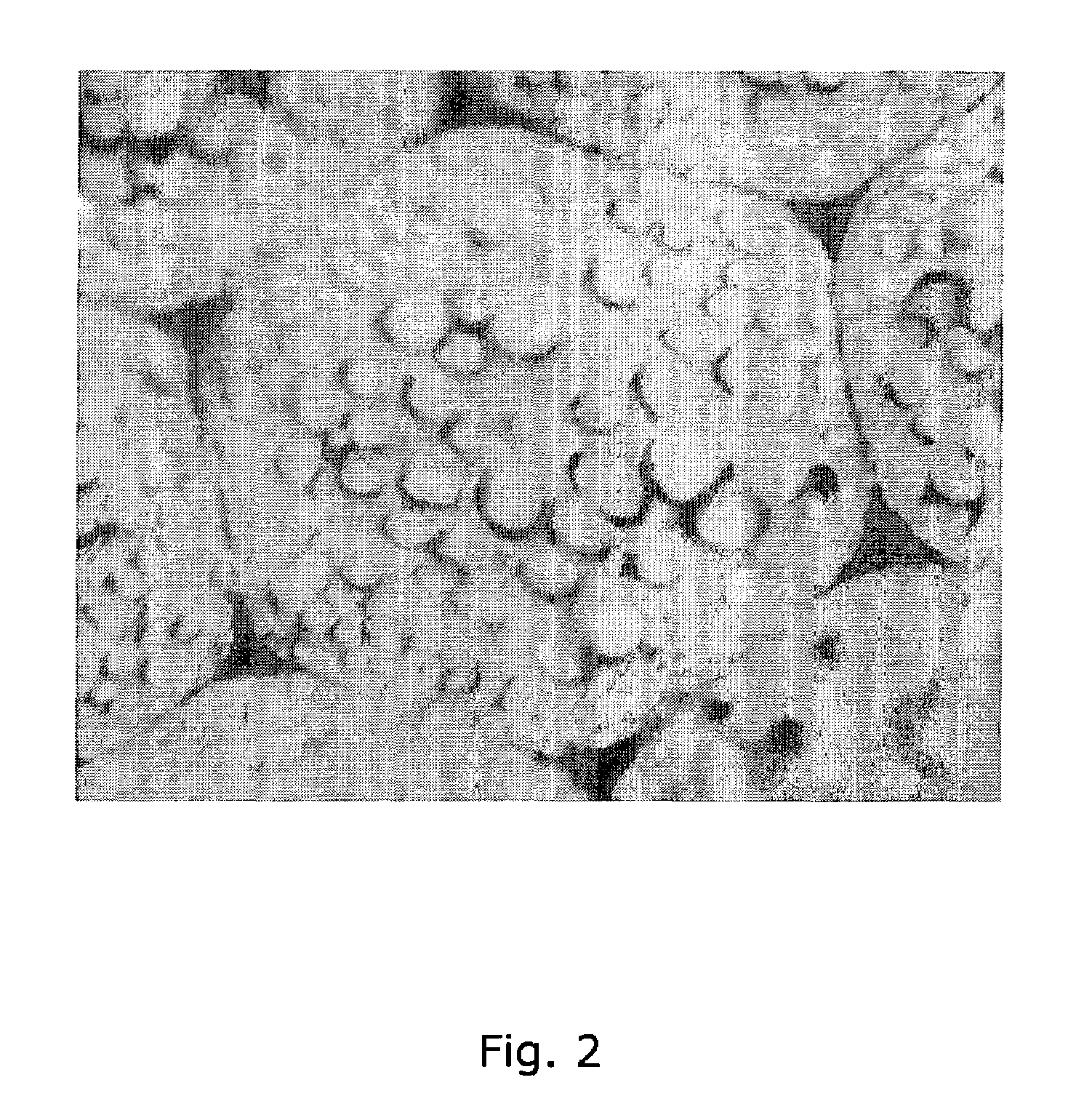Method for producing ultrafine fiber and artificial leather
a technology of ultrafine fibers and artificial leathers, applied in the field of producing artificial leathers, can solve the problems of difficult dissolving and removing sea components of fibers, difficulty in dyeing fibers, and difficulty in removing sea components, etc., and achieves excellent silk-like gloss, easy dyeing, and fast wet abrasion fastness
- Summary
- Abstract
- Description
- Claims
- Application Information
AI Technical Summary
Benefits of technology
Problems solved by technology
Method used
Image
Examples
example 1
[0033]Nylon 6 having a RV of 3.0 is mixed with low density polyethylene having a MI of 60 in 50:50 weight ratio (a ratio (D) of 20, which meets the conditions in which 20≦D≦55 and 2.7≦RV≦3.–5). The mixture was melted in an extruder. Then, the melt was spun at 275° C., using a spinneret having a hole with a L / D ratio of 3. Under conditions that each hole has an output of 0.3 g / min and a rolling speed was 270 m / min, undrawn yarns were obtained, in which a single filament has a fineness of 10 denier, a tenacity of 1.5 g / den and an elongation of 300%.
[0034]Undrawn yarns were stretched 2.5 times, and were crimped and cut to obtain staple fiber, in which a single filament has 4 denier of fineness, 3.0 g / den of strength and 50% of elongation. The photograph shown in FIG. 2 is a cross-section of fiber obtained by an optical microscope. There were about 220 islands in the fiber as shown in FIG. 2, in which 30 of them were big islands and 190 of them were small islands. In the big islands, th...
example 2
[0036]Nylon 6 having a RV of 2.7 is mixed with polyethylene terephthalate containing a sulfonic sodium salt having a MI of 70 in 50:50 weight ratio (the polyester having MI of 70 was formulated by blending polyethylene terephthalate containing sulfonic sodium salt of an intrinsic viscosity 0.63 with 10% calcium stearate powders). The ratio (D) is 25.9, which meets the conditions in which 20≦D≦55 and 2.7≦RV≦3.5). The mixture was melted in an extruder. Then, the melt was spun at 285° C., using a spinneret having a hole with a L / D ratio of 3. Under conditions that each hole has an output of 0.28 g / min and a rolling speed was 250 m / min, undrawn yams were obtained, in which a single filament has a fineness of 10 denier of a tenacity of 1.35 g / den and an elongation of 280%.
[0037]Undrawn yams were stretched 2.5 times, and were crimped and cut to obtain fiber, in which a single filament has a fineness of 4 denier, a tenacity of 2.5 g / den and an elongation of 30%. The cross-section of fiber ...
PUM
| Property | Measurement | Unit |
|---|---|---|
| Temperature | aaaaa | aaaaa |
| Temperature | aaaaa | aaaaa |
| Fraction | aaaaa | aaaaa |
Abstract
Description
Claims
Application Information
 Login to View More
Login to View More - R&D
- Intellectual Property
- Life Sciences
- Materials
- Tech Scout
- Unparalleled Data Quality
- Higher Quality Content
- 60% Fewer Hallucinations
Browse by: Latest US Patents, China's latest patents, Technical Efficacy Thesaurus, Application Domain, Technology Topic, Popular Technical Reports.
© 2025 PatSnap. All rights reserved.Legal|Privacy policy|Modern Slavery Act Transparency Statement|Sitemap|About US| Contact US: help@patsnap.com


